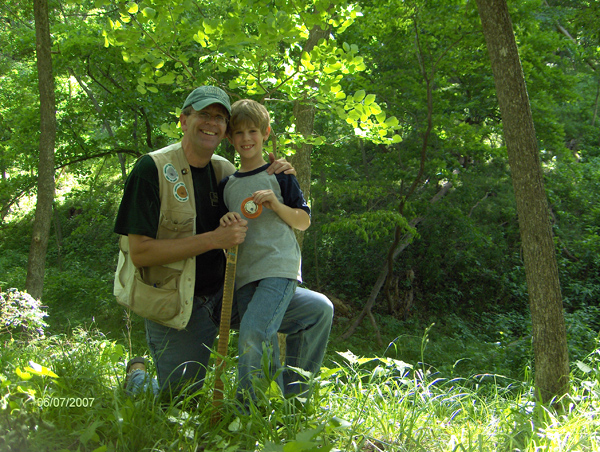
Preparing Iowa’s Woodlands And Foresters For The Future
Iowa forests cover 2.9 million acres or eight percent of its total area. Managing those timbered areas can be challenging.
That’s why landowners, both public and private, annually call on students at Iowa State University. Landowner’s goals range from increasing timber value to enhancing wildlife habitat to improving recreational access.
Student consultants, professional recommendations
Every spring forestry seniors enroll in a capstone class to evaluate and prepare recommendations for landowners on how to manage forested acres. Since 1975 students have assessed forested-lands in every corner of Iowa.
Clients have ranged from church congregations to divers salvaging old growth river logs. Each year there’s a waiting list of clients for the program. They hope to work with Iowa State students to improve Iowa’s forests while the students improve their communications and management skills.
John Tyndall, natural resource ecology and management professor and adviser, says the department never has to advertise for projects because of the class’ reputation. Each spring Tyndall and Dick Schultz, natural resource ecology and management University Professor, select from a list of projects for students.
“It’s not just an academic exercise and a good experience for the students, these clients come back because they know they are getting high quality advice,” Tyndall says.
Students select their clients, meet to understand the landowner’s goals and analyze information about the property using online resources. The students also spend several days on site surveying, measuring, sampling water and inventorying plant and animal species.
“Students alert landowners if there is an issue of concern, such as an invasive species or water quality problem,” Tyndall says.
At the end of the semester the students provide a management plan with several options from basic maintenance to more intensive and costly suggestions. Schultz says the continuum provides clients the option of implementing suggestions based on their resources.
Plan comes to life for ISU forests
It’s rare for students to be able to watch their recommendations get implemented, but it’s an opportunity Louis Hilgemann has relished. Hilgemann, a graduate student in natural resource ecology and management, helped evaluate a property owned by Iowa State three years ago.
His team developed a forest management plan for the Everett Casey Nature Center and Reserve near Boone, Iowa. The 76 acres was a gift donated to the Iowa State English department in 2009 from Everett Casey, a 1946 Iowa State engineering graduate.
“They wanted a place for students to connect to nature,” Hilgemann says. “We recommended and have implemented prairie restoration, trails and meeting areas, invasive species removal and we hope to do stream bank work in the future.”
In May, the forestry seniors advised three private landowners and three Iowa State University research farms. Mark Honeyman, director of Iowa State’s research farms, says they are using the student expertise as a springboard for more intensive management.
“Our first step is to inventory what’s in these woodlands, so we can be more intentional about how we manage these areas,” Honeyman says.
Communication key to great forestry
Paul Tauke (’88 forestry) is the bureau chief and state forester for the Iowa Department of Natural Resources. He says a misconception about professional foresters is that they spend a lot of time alone. The reality is that foresters are always working with people. This class is key to helping students hone their communications skills.
“You can be a great technical forester, but if you can’t communicate to people around you and the people you work with, then you’ll just be a technical forester, not a great forester,” Tauke says.



